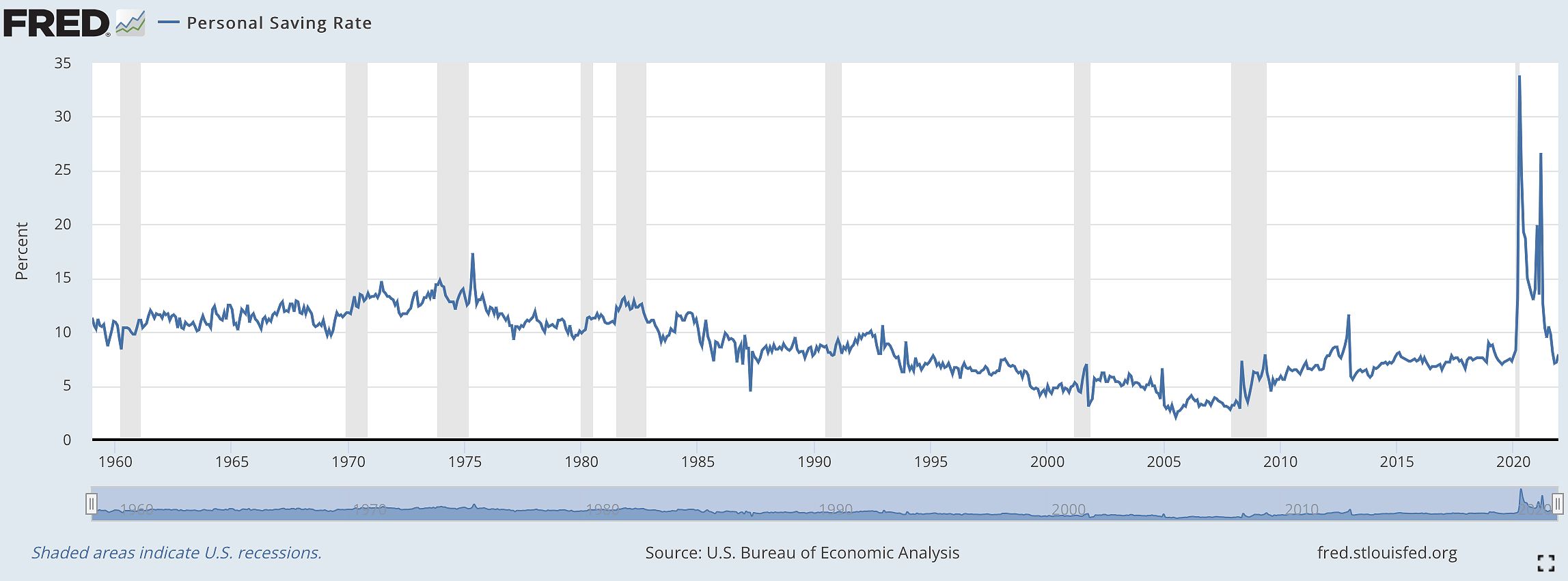What Is A Good Savings Rate For Young Adults? (and How To Achieve It)
Meta Description: Starting your career? Learn about what is a good savings rate for young adults, how to build an emergency fund, and how to start investing for a secure financial future.
Why Saving Early Matters
Establishing a habit of saving money early in your career is vital. One of the most compelling reasons to save at a young age is the power of compound interest. This financial principle allows your savings to grow exponentially over time, as you earn interest not only on your initial contributions but also on the accumulated interest itself.
For example, consider two individuals: one who begins saving $100 a month at age 22 and another who starts at age 30. By the time they both reach retirement age, the earlier saver will have accumulated significantly more wealth, despite both contributing the same monthly amount. This stark contrast illustrates the importance of early saving; it not only fosters a financial cushion but also accelerates the path toward achieving financial goals.
Saving early also alleviates financial stress. Knowing you have a safety net can provide peace of mind, allowing you to concentrate on career advancement and personal development. Moreover, early savings can offer greater flexibility in pursuing life opportunities, such as homeownership, travel, or further education, ultimately enhancing your quality of life.
Determining Your Savings Rate
When it comes to determining your savings rate, it’s crucial to recognize that there is no one-size-fits-all answer. Financial experts often recommend aiming for a savings rate of 20% of your income, but this may not be realistic for everyone. A more adaptable approach is the 50/30/20 rule, which suggests allocating your income as follows:
- 50% for needs: This includes essential expenses such as housing, food, and transportation.
- 30% for wants: This covers discretionary spending like entertainment and dining out.
- 20% for savings: This portion should be directed toward your savings and investment accounts.
While this framework provides a solid foundation, it’s vital to adjust your savings strategy according to your unique financial circumstances. For instance, if you are grappling with significant student loan debt, you may need to prioritize debt repayment while still contributing to your savings.
Tracking your spending habits is instrumental in identifying areas where you can cut back and increase your savings rate. Utilizing budgeting apps or spreadsheets can streamline this process, enabling you to gain insights into your financial behavior and make necessary adjustments. Setting a specific savings goal each month can also serve as a motivating factor to keep you on track.

Setting Savings Goals
Establishing clear savings goals is essential for maintaining focus and motivation throughout your financial journey. Common objectives for young adults typically include:
- Building an emergency fund
- Saving for a down payment on a house
- Planning for retirement
- Funding travel or education
Each of these goals requires a different approach, and prioritizing them based on your individual circumstances is crucial.
Building an Emergency Fund
An emergency fund acts as a financial safety net designed to cover unexpected expenses, such as medical emergencies or car repairs. Financial experts generally recommend saving three to six months’ worth of living expenses in this fund. Starting small is perfectly acceptable; even setting aside a few dollars each week can lead to significant growth over time.
To facilitate building your emergency fund, consider automating transfers to a separate savings account dedicated to this purpose. This method ensures consistent contributions without the temptation to spend that money elsewhere. Regular contributions, no matter how small, can accumulate and provide the financial security you need in times of crisis.
Planning for Retirement
Although retirement may seem distant, initiating your savings early can make a substantial difference. Many employers offer retirement plans, such as 401(k)s, which can help you save efficiently. If your employer provides a matching contribution, take full advantage of this benefit to maximize your savings.
Additionally, consider opening a Roth IRA. This account allows your investments to grow tax-free, making it an excellent option for young savers. Start with a modest contribution, and as your income increases, gradually raise your savings rate to ensure you remain on track for retirement. The earlier you begin, the more time your money has to grow.
Practical Tips to Increase Your Savings Rate
Boosting your savings rate requires a proactive approach. Here are several actionable steps to enhance your savings:
-
Negotiate Your Salary: If you believe you deserve a raise, do not hesitate to discuss your compensation with your employer. A higher salary can significantly impact your savings potential, allowing you to allocate more toward your savings goals.
-
Cut Unnecessary Expenses: Evaluate your spending habits and pinpoint areas where you can reduce costs. Cooking at home instead of dining out, finding more affordable housing, or eliminating subscription services can free up funds for savings. Small adjustments can lead to substantial savings over time.
-
Take Advantage of Discounts: Seek out promotions and discounts that can help you save on everyday expenses. Every dollar saved contributes to your savings goals. Use coupons, sign up for loyalty programs, and look for sales to maximize your savings potential.
-
Explore Side Income Opportunities: Consider taking on freelance work or a part-time job to supplement your income. The extra money can be directed toward your savings. Many young adults find success in gig economy jobs or leveraging their skills for additional income.
-
Automate Your Savings: Set up automatic transfers from your checking account to your savings account. This method ensures that you consistently save without the temptation to spend that money. Automating your savings can make it easier to stick to your financial plan.
-
Stay Consistent: Establishing a disciplined savings habit is key. Even small, regular contributions can accumulate over time, leading to significant savings. Create a schedule for your savings contributions to help you remain accountable.

Investing Your Savings
While saving is essential, investing your money can help it grow even more. Understanding different investment options is crucial for young adults looking to maximize their savings.
Investment Options for Young Adults
-
Index Funds: These funds track a specific market index and offer a diversified investment option with relatively low fees. They are suitable for long-term investors seeking steady growth. Index funds are often recommended for beginners due to their simplicity and lower risk compared to individual stocks.
-
ETFs: Exchange-traded funds are similar to index funds but trade like stocks on an exchange. They offer flexibility and can effectively diversify your investment portfolio. ETFs can provide exposure to various asset classes, making them a versatile option for young investors.
-
Mutual Funds: These professionally managed funds pool money from multiple investors to purchase a diversified portfolio of stocks and bonds. They can be an excellent option for those who prefer a hands-off approach to investing. Mutual funds often come with management fees, so it’s essential to choose funds with reasonable costs.
Risk Tolerance and Diversification
Understanding your risk tolerance is essential when selecting investments. Your risk tolerance is influenced by factors such as your age, financial goals, and comfort level with market fluctuations. A well-balanced portfolio often includes a mix of low-risk and high-risk investments, which can help mitigate potential losses.
Diversification is another critical aspect of investing. Spreading your investments across different asset classes, such as stocks, bonds, and real estate, can help reduce risk. This strategy ensures that your portfolio is not overly reliant on the performance of a single investment, providing a buffer against market volatility.
What is a good savings rate
Q: How much should I save each month?
A: A good starting point is to aim for a savings rate of 10-20% of your income, but it should be adjusted based on your individual circumstances and financial goals.
Q: What if I can’t afford to save 20%?
A: If saving 20% feels unmanageable, start with a smaller percentage and gradually increase it as your income grows or expenses decrease.
Q: What if I have student loan debt?
A: Prioritize paying down high-interest debt while still saving for an emergency fund and retirement.
Q: Is it okay to invest in the stock market at a young age?
A: Yes, investing early can be advantageous, as it allows you to take advantage of compound growth over time. However, ensure that you understand the risks involved.
Q: How do I know if I’m on track with my savings goals?
A: Regularly reviewing your financial progress and adjusting your goals as needed can help you stay on track. Consider using budgeting tools or consulting a financial advisor for guidance.
Conclusion
Understanding what is a good savings rate is essential for young adults embarking on their financial journey. By saving early, establishing clear goals, and implementing practical strategies to increase your savings, you can build a secure financial future. Prioritize saving and investing to achieve your long-term financial objectives, and you’ll be well on your way to financial independence. Small, consistent actions can lead to significant results over time, ensuring that you are prepared for whatever life may bring.



